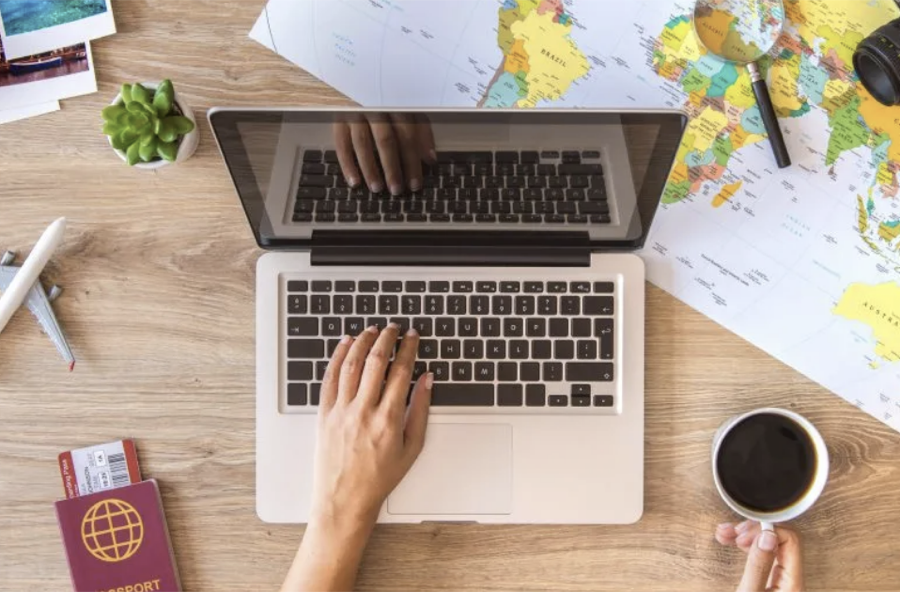Remote work once meant answering emails from your apartment. Now? It means deploying code from a beachfront café in Koh Samui or running your freelance business from a bamboo hut in Pai. If you’re a digital nomad looking to trade your home office for a palm-fringed paradise, Thailand’s Digital Nomad Visa might be your perfect launchpad.
Thailand has long been a top destination for remote workers and expats, but with the recent rollout of its Long-Term Resident (LTR) Visa, digital nomads now have a legal, long-term pathway to work, live, and thrive in the Land of Smiles. Whether you’re a software developer, content creator, or startup consultant, here’s everything you need to know about coding (and chilling) from the coast—legally.
Why Thailand?
Thailand isn’t just beautiful—it’s built for nomads. Before the LTR visa, thousands of freelancers, tech workers, and solopreneurs already made Thailand their base thanks to:
-
🌴 Affordable lifestyle: Rent, food, transport, and entertainment are budget-friendly—even in major cities.
-
💻 Reliable infrastructure: Fiber internet is widely available, and coworking spaces are abundant.
-
🍛 Unmatched cuisine: From $2 street food to gourmet Thai fusion.
-
🧘 Work-life balance: Yoga, meditation, massage, and nature are always close by.
-
🌍 Nomad-friendly culture: Whether in Chiang Mai or Koh Lanta, expat and remote worker communities are well established.
Now, you don’t have to live in visa limbo. You can work legally with peace of mind.
What Is Thailand’s Digital Nomad Visa?
Thailand’s government officially launched the Long-Term Resident (LTR) Visa in 2022, with several categories—one of which is the “Work-from-Thailand Professional” track. This is Thailand’s digital nomad visa in practice, created for foreign professionals working remotely for overseas companies.
Unlike tourist or education visas, the LTR visa allows:
-
✅ Legal remote work from Thailand
-
✅ Stays of up to 10 years (5-year visa renewable once)
-
✅ Multiple re-entry privileges
-
✅ A digital work permit
-
✅ No 90-day reporting (only one annual report)
-
✅ A flat 17% income tax rate for qualifying individuals
-
✅ Permission to bring dependents
Who’s Eligible?
This visa is aimed at professionals with stable careers and income. Here’s a breakdown of what you’ll need:
✔️ Employment
You must work for (or be contracted by) a company registered outside of Thailand.
✔️ Income
-
Earn at least USD $80,000 annually for the past two years
OR -
Earn between USD $40,000–$79,999 annually, and hold either:
-
A Master’s degree
-
Ownership of intellectual property
-
At least 5 years of relevant experience
-
✔️ Work Experience
At least 5 years of professional experience in your industry over the last 10 years.
✔️ Health Insurance
You need a health policy that covers at least $50,000 USD of medical expenses in Thailand.
How to Apply: Step-by-Step
1. Start Online
Go to the LTR Visa portal and register. Choose the “Work-from-Thailand Professional” category.
2. Prepare Your Documents
Upload digital copies of:
-
Passport
-
Proof of income (bank statements, tax returns, or payslips)
-
Employment contract
-
Health insurance policy
-
Resume/CV showing your work history
-
Supporting documents like a degree or IP ownership if applicable
3. Wait for Approval
The Board of Investment (BOI) reviews your application—this typically takes 4 to 6 weeks.
4. Receive an Endorsement Letter
Once approved, you’ll receive an official letter allowing you to apply for the visa.
5. Get the Visa Issued
You can collect your visa at a Thai embassy, consulate, or BOI immigration office in Thailand. The fee is THB 50,000 (~$1,400 USD).
6. Apply for a Work Permit
After arriving, visit the One Stop Service Center to get your digital work permit—your license to work legally from the beach, mountains, or anywhere in between.
Best Places to “Code from the Coast”
Thailand has many regions perfect for remote work. Here are a few digital nomad favorites:
📍 Chiang Mai – Quiet, affordable, and full of coworking cafés
Best for: Developers, writers, startup founders
📍 Bangkok – Fast-paced, ultra-connected, and cosmopolitan
Best for: Consultants, entrepreneurs, marketers
📍 Koh Phangan – Yoga retreats by day, Wi-Fi cafés by night
Best for: Wellness-oriented freelancers, creative professionals
📍 Phuket & Krabi – Island life with city comforts
Best for: Digital teams, solopreneurs seeking a tropical base
📍 Hua Hin – Calm and cultured with a coastal vibe
Best for: Long-term expats, families, mid-career professionals
Real Life on a Digital Nomad Visa
With your LTR visa and work permit in hand, you can finally stop worrying about overstaying visas or skipping borders. Instead, focus on your business, personal growth, and soaking up all that Thailand has to offer.
Want to:
-
Launch a side project?
-
Learn Thai cooking or Muay Thai?
-
Spend weekends island hopping?
This visa gives you the legal space and time to turn your life into a true adventure—without compromising your income or career.
Tips for Success
-
🔄 Renew your health insurance annually to maintain visa compliance.
-
💼 Stay remote-only: You’re not allowed to work for Thai companies under this visa.
-
🌐 Join local nomad groups on Facebook or Meetup for support and networking.
-
🧾 Keep clear records of your income and contract in case of future audits.
-
🧳 Explore Thailand: Domestic flights are cheap, and every region offers something unique.
Final Thoughts: The Best of Both Worlds
The launch of Thailand’s Digital Nomad Visa is more than a policy change—it’s an invitation. An invitation to live where you love, work with freedom, and find your balance between productivity and peace.
If you’re a remote worker who’s been dreaming of coding from the coast—or just living life on your own terms—Thailand is ready for you. And now, thanks to the LTR visa, you don’t have to do it in secret.




